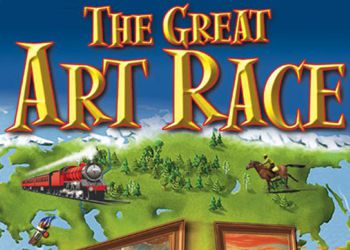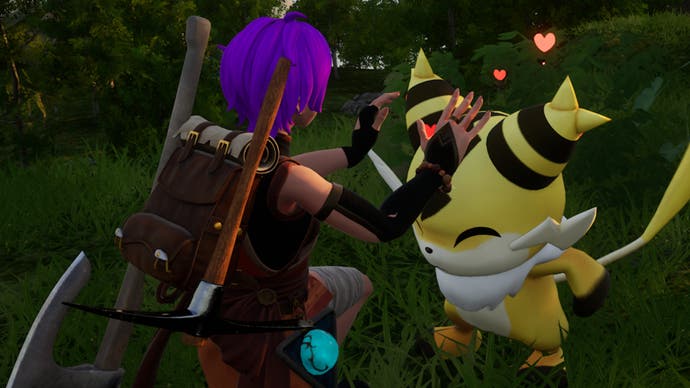THE GREAT ART RACE: Game Walkthrough and Guide

Do not believe our eyes when you see the “Economic Simulator” on the box with the game: it is so written from hopelessness. The economic component is only a binding material for universal action, the genre of which is unknown by science. The nearest analog is a simulator of pirate life: the same dynamism of the actions of the main character, the same economic background, the same travels on overseas ports. Significantly less blood, significantly more art – that’s all differences.
Do not look for in pursuit of works of art of realism: the basis of the game – a few simple rules and a lot of action. Because of the monitor, the case of board games looks like a minimum of movement, step-by-step regime, gradual economic expansion in spirit close to the traditions of hexagon bones and plastic chips. Although you can play both against the four opponents, the action is clearly aimed at the multiplayer game, in turn at one screen. For auctions even invented a special system with personal keys. The economic ordeal direction of the simulator tangible towards the study game: from time to time the game offers another portion of useful information. Obvious from the name of the history of paintings and the names of artists are complemented by brief historical references, not to mention the geographical component of the game. However, the squabs may not be afraid: messages can be passed and disconnected at all. We have a rare case, when attempts to shove in someone’s brain more arbitrary information did not spoil the final product: fun and ease reign in the world of art hunters.
The plot is simple, but unusual: one beautiful morning in the morning of 1918, one millionaire collected five nephews in Berlin and announced: all the inheritance will receive the one who will collect more famous paintings to the death of uncle. Initial capital – 150 thousand dollars, which is not even enough for one decent work of art. You have to first base plantations in remote corners of the planet, making money and already with a thick wallet in your pocket to run through auctions.
Table 1
Hotkeys
| Key | Result |
| Backspace | Back to the city |
| Escape | Close the current window and open the main menu |
| F1 | Re-output the greeting window (on the city screen) or open a help file (in the building) |
| F5 | Fast saving |
| IN | Balance |
| IN | Economy Review |
| N | news |
A little story
In the distant 1987, the well-known (then) company developer ARIOLASOFT released the game Vermeer. An unusual simulator of the search for artistic works quickly gained popularity in Germany (the benefit was in German), but in other countries he did not receive great popularity (for the same reason).
After 10 years, the author of the Ralph Chamber (Ralf Glau), along with Ascaron, released a remake of an old game called Vermeer: Die Kunst Zu Erben (“Heirs of works of art”). Next time, the company no longer wait for the decade – already in 2005 a new game with an honest subtitle appeared: Vermeer 2: The Great Art Race. Approach is standard for current times: the idea is old, the effects are new.
Business
The main principle of the game – all do it myself. Heroes are obliged to personally wear around the globe: buy plantations, pay workers, send goods, enter into contracts, sell goods, bargain at auctions. Even to evaluate the authenticity of the paintings by itself: I have to learn from art historian courses! Unrealistic? But dynamic and fun!
You can start the game with various properties, and the optimal strategy will depend on the choice. If you expect the end of the game in two years, you will have to use tactics for a blister: buy as many paintings as possible at an early stage. If you prepared for a long seven-year campaign, put in the ground more – the richest wins. One Tip: Do not disconnect the pictures as the goal of the race, otherwise the game immediately loses most of its charm.
Making money for the purchase of paintings is in the third world countries, watering plants on plantations then hired workers. The algorithm is simple: come somewhere in Rio de Janeiro or Havana, we buy a plot, hire workers and wait for the result. The harvest does not depend on the season, and the first fruits we get in a few days. That’s what a good climate means!
There are no Russian cities in the game, and it is logical: the plantation of coffee somewhere near Moscow would be in itself strange, and 1918 would contribute to the situation an excessive piquancy.
In every city you can grow two types of goods out of five: tea, coffee, cocoa, tobacco, silk. There is no fundamental difference: all goods from time to time are growing in price, then sharply fall. Usually silk and tobacco stable coffee, cocoa and tea, but it all depends on the situation.
It is important: Do not be surprised if the purchase of a plantation begins with the “Cancel” button: This means that you accidentally entered the payment mode.
The more people work on the plantation, the more harvest. True, the dependence is non-linear: five workers will collect seven tons per week, ten workers are ten tons, and forty workers are only twenty tons. However, the cost pays off, even if it falls seven workers for one ton with a salary of $ 10, so it is not worth saving. Plantation at the beginning of the game pays off in about six months, and then prices are growing and the payback time of plantations is reduced to a pair of months.
On a note: reduction “Work. 16 T./day“Indicates the number of tons of products collected from plantation per week.
With fields, products hits the warehouse. Now it is enough to return to the city itself and send the goods to one of the trading houses – London or New York (where more than or much closer). Send goods also worth the money, however, not too much (the price changes with time, look to the left of the control buttons).
It remains to personally go to London or New York and sell the goods on the local stock exchange. Be careful: you need to pay money for the storage of goods, and prices are growing at the exhibitor. If 10 tons are for us (whether it is worth worrying because of such trifles), 100 tons will cost a dozen or different thousand, then when stored 1000 tons can be lost several million for a month.
If possible, you can conclude a forward contract – the obligation to deliver the goods to a certain period. The price according to such contracts is usually higher, but also a fine for non-compliance with the contract will easily break the irresponsible merchant. You need to decide in each case separately – do you need extra ten thousand in three months or it is better to invest money now in some plantation.
As a result, the net profit from the work of one worker is $ 25 a day to start the game and in time increases to about $ 50 per day. At the same time, the minimum salary is $ 1 per day, and the salary of $ 10 is considered prestigious. Feel the exploiter!
The key to victory is the rational planning of its time. Long journey throughout Asia should end either simultaneously with the auction, or in one day with the beginning of any courses. True, from time to time (usually at the most inopportune moment), strange random events occur with the player: under the crazy pretext it is here, then they are delayed there for several days. One thing remains: to travel with a time reserve, and especially important auctions have to wait for the road, but in the hotel.
Agriculture
Agriculture in the game is not a problem, it is enough to buy a plot of land and hire workers. None of the land for any services you do not need to pay: if only the salary went on time.
Vintage at any time easy to raise interest at ten: there would be money. By the way, the plots near the reservoirs were initially improved by one level, but not trouble: three more remains. Is it worth saying that small costs pay off in a few weeks?
When you disappoint in your products, you can replace the seeds by others from the same city. If you pay a small amount, the next day, young plants will already be fruitful.
Last opportunity in local agriculture – flushing soil. Paying a small amount, we briefly increase the production of harvest in one and a half – two times, but after such a shake, the plot two months gives a minimum of the result. Possible applications from the method of a bit: it will pay for itself, only if we “burn” the forward contract or is planning a particularly important auction.
The main problem in agriculture – strike. At the beginning of the strike, half of all goods in the city Magically disappears (if not in the city half a year, it happens very disappointing). The probability of a strike depends on the salary and from the availability of competitors in the city. When paying $ 1 per day, bad conversations begin in a couple of weeks, and a daily salary of $ 10 workers agree to wait for more than six months!
If things go well, new people appear in the city: they should be urgently sent to work. The more subordinates, the better! If all the workers seized a competitor, you will have to fork out for a strike: an artificial intelligence often saves a wage, and to arrange force majeure circumstances is not so expensive.
You can pay salary or automatically when you appear in the city, or when you press a specific button. Obviously, the second way is relevant only with a tough disadvantage of funds: Hungry workers are dangerous to business.
This is a bug: The rules of the game allow submitting loopholes: if you appoint a working salary of dollars on two hundred a day or even more, they will be happy for a few more years, even if they do not see a cent. What do these cheerful people live, it is unknown, but they collect the harvest right and competitors are not somewhere. In the case of folk unrest about the city, you can simply forget: he has already paid for the money invested.
123



